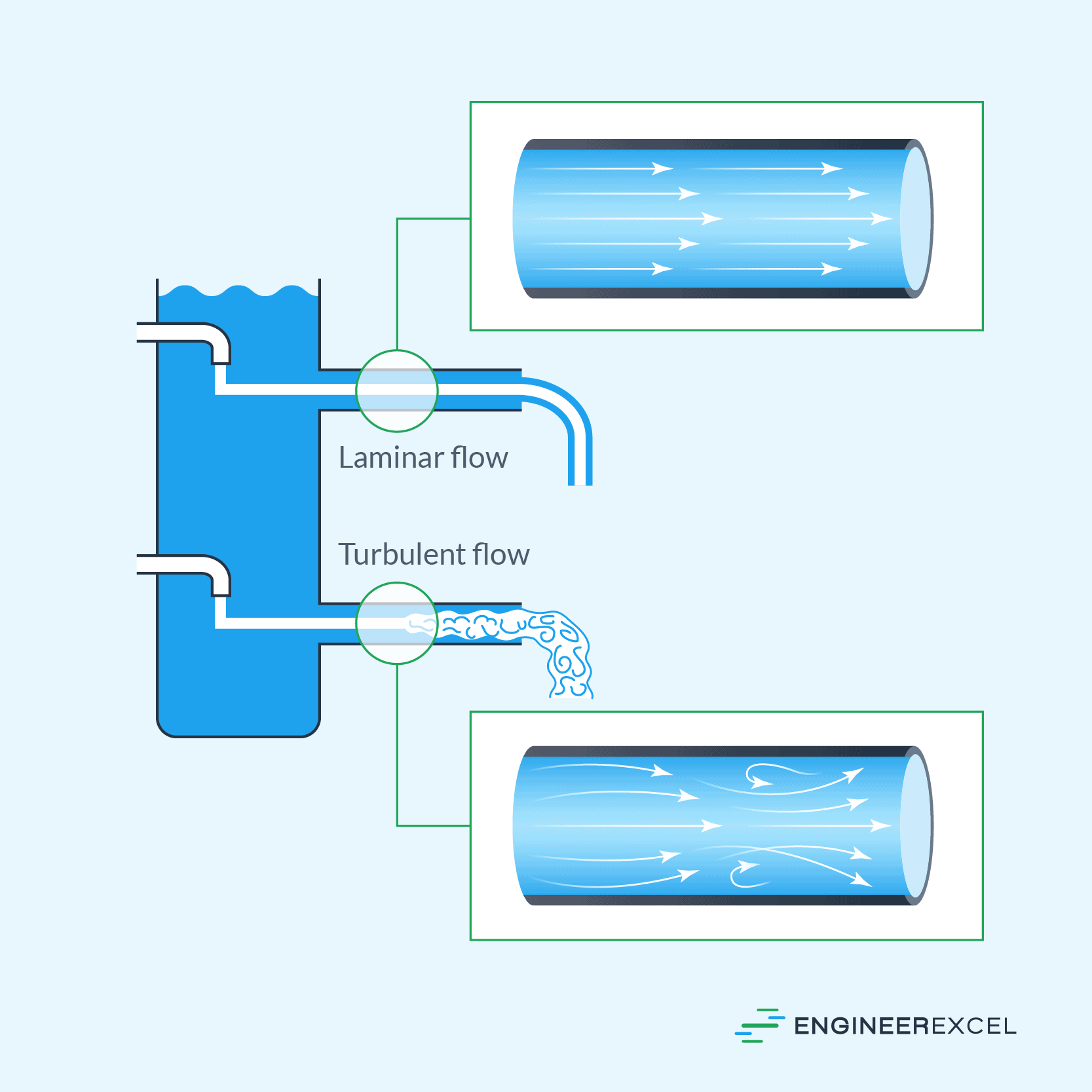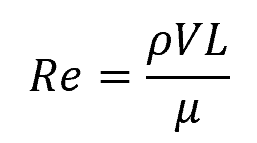Laminar and turbulent flow are important concepts in fluid mechanics that describe how fluids behave under various conditions. Laminar flow is characterized by smooth, orderly, and parallel layers of fluid motion, while turbulent flow is characterized by chaotic and disordered fluid motion.

In this article, we will discuss practical examples illustrating the characteristics of these two flow regimes.
Understanding Laminar and Turbulent Flows
Before discussing their real-life examples, it is important to first understand the differences between laminar and turbulent flows.
Laminar flow occurs when fluid particles move along well-defined paths or streamlines, where all the streamlines are parallel with each other. This type of flow is common in small diameter pipes containing high-viscosity fluids moving at low velocities. In laminar flow, layers of fluid glide smoothly over the adjacent layer, creating minimal frictional forces.

Elevate Your Engineering With Excel
Advance in Excel with engineering-focused training that equips you with the skills to streamline projects and accelerate your career.
On the other hand, turbulent flow is characterized by irregular and chaotic fluid movement. It occurs when the fluid particles no longer follow well-defined paths and instead have unpredictable motion. Turbulent flow is commonly observed in large diameter pipes containing low-viscosity fluids moving at high velocities.
The differences between laminar flow and turbulent flow are illustrated by the diagram below:

In fluid mechanics, an important parameter used to determine the flow regime is the Reynolds number. The Reynolds number is a dimensionless parameter that characterizes the flow regime of a fluid based on the relative importance of inertial forces (resulting from fluid velocity) to viscous forces (resulting from fluid viscosity). Mathematically, it is defined as follows:

Where:
- Re = Reynolds number [unitless]
- ρ = density of the fluid [kg/m3]
- V = velocity of the fluid [m/s]
- L = characteristic length of the flow [m]
- μ = dynamic viscosity of the fluid [Pa-s]
In the equation above, the characteristic length could be the diameter of a pipe, length of a wing, or any other dimension relevant to the situation.
When the Reynolds number is low, the flow is laminar, and when it is high, the flow is turbulent. Typically, laminar flow occurs within a Reynolds number range of 0 to 103, beyond which it becomes turbulent.
However, the exact Reynolds number at which this transition occurs is influenced by factors such as the conduit’s geometry, fluid properties, and flow conditions. For instance, in circular pipes, the transition from laminar to turbulent flow takes place at Reynolds numbers between 2300 and 4000.
Examples of Laminar Flow
Laminar flow is characterized by smooth and orderly movement of fluid particles. In this type of flow, particles follow parallel paths within the fluid. Here are some examples of laminar flow that you may encounter in everyday life.

Consider the normal flow of blood through capillaries. In this case, the fluid particles move in an organized manner with minimal disruption. This orderly flow helps in efficient exchange of nutrients and waste materials between blood and tissues.
Another example can be the flow of oil through a thin tube. The fluid moves smoothly and continuously, with very little friction or disturbance along the tube walls. This allows for efficient transport of the oil without excessive energy loss.
Lastly, picture water running through a hose at a low rate. You might observe the water flowing in a straight line and maintaining a streamlined motion. This smooth and streamlined nature of fluid motion is a prime example of laminar flow.
Examples of Turbulent Flow
Turbulent flow is characterized by chaotic, irregular, and rapidly changing motion of fluid particles. One common example is the smoke rising from an incense stick, which transitions from laminar to turbulent flow as it rises and starts to eddy.

Another instance of turbulent flow is white water rapids. When a river flows through a rocky section, its flow becomes turbulent as the water swirls around and crashes into the obstructions. In a similar vein, the flow of air around an airplane wing at high speeds becomes turbulent due to the complex interactions between the wing’s surface and the fast-moving air.
Lastly, the flow of blood in arteries can also exhibit turbulence, particularly in cases where the blood flow rate is extremely high or if there’s an anomaly present, such as an arterial plaque buildup. Turbulence in blood flow can lead to an audible sound called a heart murmur, which healthcare professionals can detect using a stethoscope.
